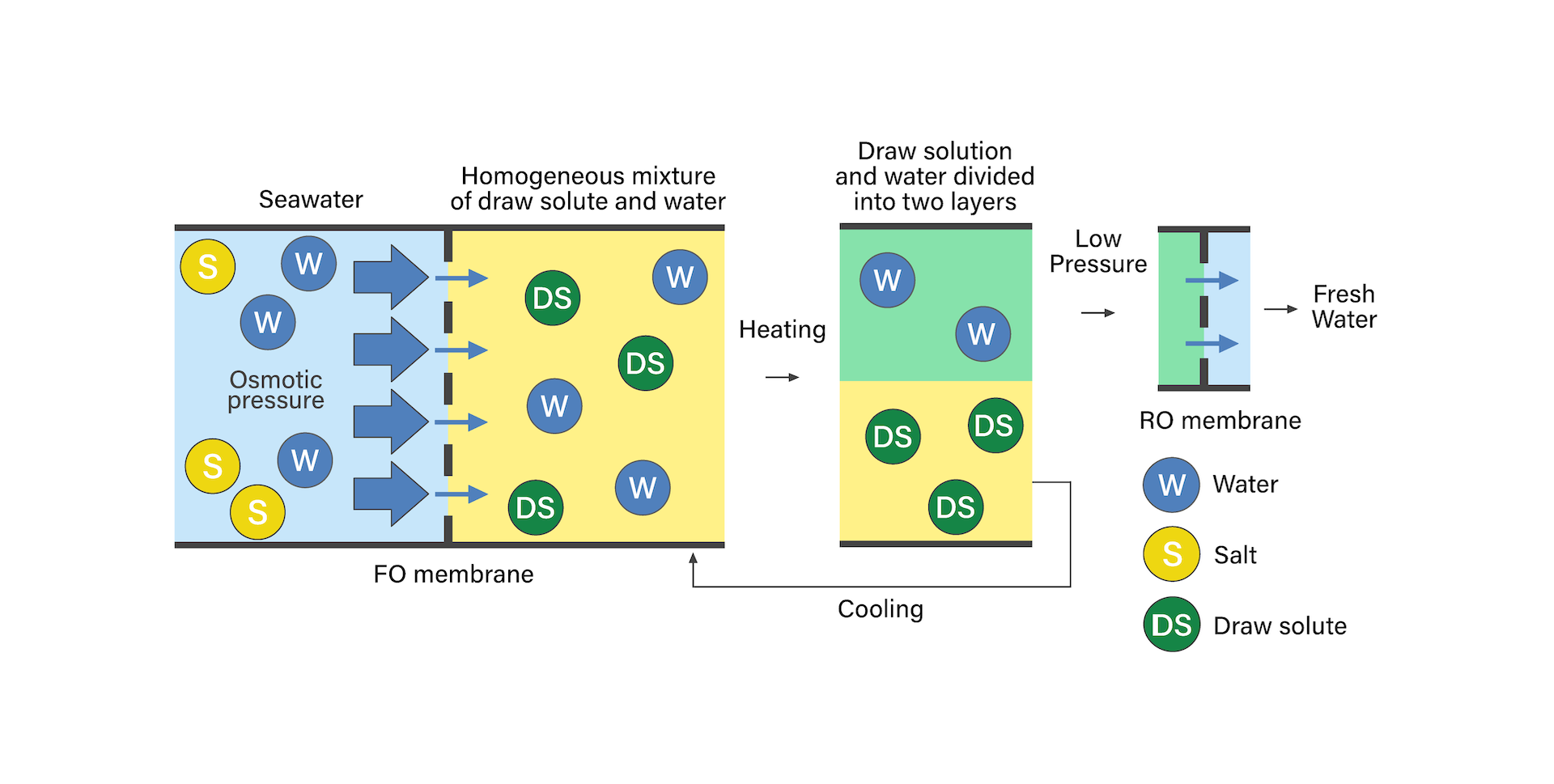2024.06.27
Sustainability
Innovative Chemicals Enable Energy-Efficient Forward Osmosis Water Purification Technology

Growing populations, residential development and industrial expansion have compromised freshwater supplies across the world, elevating the need for innovative water purification technologies. These technologies must not only deliver the necessary water quality but also address the financial challenges of conventional systems like reverse osmosis (RO).
While RO technologies have succeeded in providing purified water for consumption, agriculture or industry, their energy efficiency inhibits greater adoption. Nippon Shokubai has developed a draw solution in cooperation with Trevi Systems. This draw solution is an advanced chemical that enables forward osmosis (FO) water purification systems that are more energy-efficient.
Osmosis Overview
Osmosis is a natural process that occurs when two water volumes of differing concentrations are separated by a semipermeable membrane. Crucial to osmosis because it prevents the solutes from diffusing high concentrations to low concentrations, the semipermeable membrane only allows water molecules to permeate. This process occurs naturally and requires no energy.
As an example, if a semipermeable membrane separated freshwater and saltwater, freshwater molecules would cross the membrane to the saltwater. As the name implies, reverse osmosis is the same process but inverted — pure water molecules are separated from the high solute concentration solution. However, achieving RO requires an energy input.
Going With the Flow
In order for RO systems to filter water, pumps must generate enough pressure to overcome the significant hydraulic pressure caused by osmosis, requiring a lot of electrical energy. This requirement is eliminated if water is transported in the same direction as the osmotic pressure. Forward osmosis systems are pump-free and utilize a draw solution to purify water with a semipermeable membrane.
The FO system utilizes the difference in solute concentration between seawater and draw solution. The natural osmotic pressure transports pure water molecules from seawater to the draw solution under low pressure and energy conditions. Applying low-grade heat to the draw solution separates pure water from the concentrated draw solution. This allows the pure water to be siphoned off for recovery while the draw solute remains for reuse.
FO technology has demonstrated lower energy consumption, only requiring one-third the power of conventional RO systems. Recently, Trevi Systems commenced a large-scale FO project that produced freshwater at a rate of 500 m3/day. This pilot plant also recovers 65% more water from seawater compared to commercial RO systems.
Newsletter Sign-Up
Sign up for our e-newsletter and learn more about what we do at NAII Page Top
Page Top  Back to List
Back to List